Tech Trends That Dominated the Food World in 2015
The tech and food worlds are no doubt deeply intertwined, and as the food world modernizes and evolves, tech changes with it. Similarly, what we are eating, whether it be at McDonald’s or a four-start restaurant, is shaped by innovations in technology.
This year’s top technology trends saw the explosion of products aimed at convenience and ease, as well as devices that would be right at home in a science fiction movie. This was also the year that everyone and their mother became a foodie, which lead to a boom in food-based apps, sites, and brands aimed to cash in on this rapidly rising scene. Below, we’ve pinpointed some of the biggest tech trends we’ve seen come out of the food space since the start of the year. Now the only question is: What comes next?
3-D Printed Food
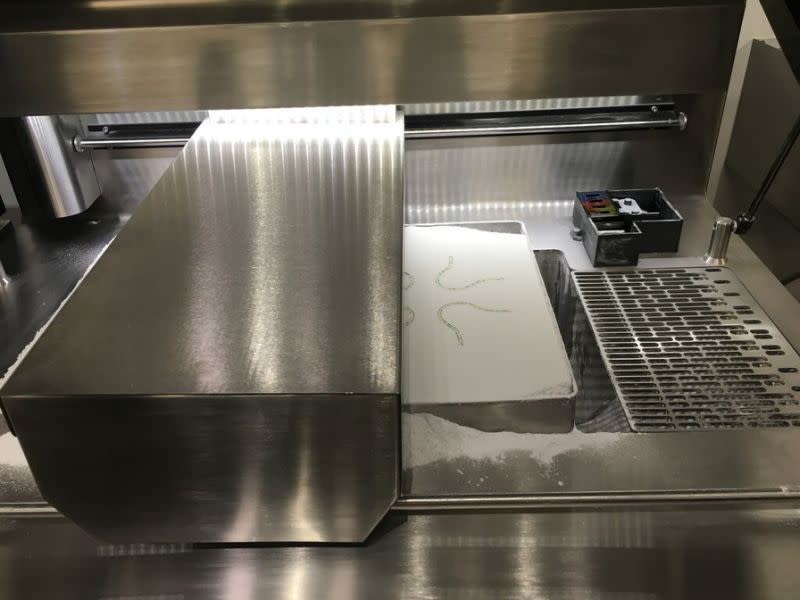
A 3D printer at the new 3DS Culinary Lab. (Photo courtesy of Jackie Strause.)
If we’re talking futuristic, it doesn’t get much more sci-fi than 3D printers. And while many can wrap their minds around printing tooth brushes and toys, things become slightly more boggling when we start talking food. That’s right — completely edible, nutrient-containing, and possibly even tasty food.
A leading 3D printing and manufacturing company, 3DSystems, became the first group to venture into the realm of printed food at their digital kitchen in Los Angeles, where chefs and digital innovators come together to experiment, cook, and feel out the 3D food printing field.
More: How a 3D Printed Cracker Could Transform the Food Industry
But just how does one print food? As with any printer, once an item is sent to print, the machine builds it layer by layer. After a food is selected to be printed, this order goes through the lab’s software, where chefs and designers have previously determined how the food will look and what flavors go into it.
“We can print with onion powder, wasabi powder, sugar, fruits and vegetables — really anything you can imagine,” Kyle von Hasseln, the lab’s creative director, explains. “The printer can add food coloring to every pixel, or over the whole object and just build millions of beautiful colors on the surface.”
While sweets, which are simple and pretty, have been the primary focus in the first stage of the 3D food printer’s life, top chefs have been pushing the envelope to create sophisticated dishes like Wagyu steak tartare, a pumpkin and maple waffle with quail egg, and deconstructed French Onion soup.
Who knows? Soon personal 3D food printers could be the new microwave. Press a button, wait a few minutes, and dinner’s ready — no muss, no fuss.
Food Delivery Services
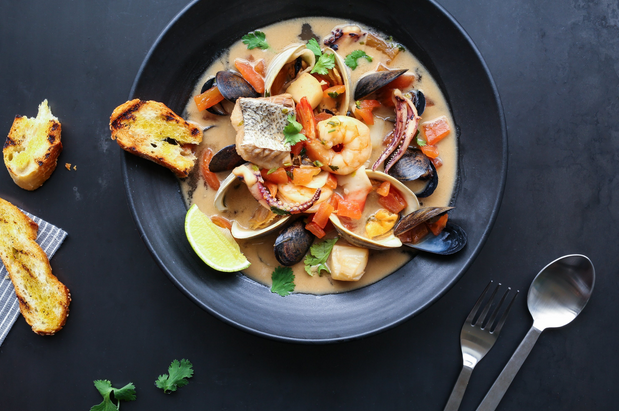
Delivery services like Munchery aim to make cooking and eating gourmet meals at home easier than ever. (Photo courtesy of Munchery.)
Food delivery is nothing new, right? First, it was good ol’ fashioned phone calls, then websites like Seamless, then apps bringing the whole process to your smartphone. However, in 2015, as more and more people are craving healthy, homemade meals but don’t have the time to shop for them, the food delivery field has exploded. Many companies have popped up seemingly overnight to offer the taste of homemade meals, ingredients and recipes to make that meal for yourself, and gourmet restaurant-quality dishes right to consumers’ doors.
More: Watch Out Seamless, New Delivery Services Are Invading Your Turf
Munchery, a food startup that operates now in San Francisco, New York, Seattle, and Los Angeles, allows customers to choose from a menu of chef-created dishes, from a Christmas Porchetta Dinner, to a Roasted Salmon Caesar Salad, to a Salmon Sushi Duo — each entree costing around $10-15. Those dishes are then made by chefs and delivered right to your door just in time for dinnertime.
Alternatively, Plated, Blue Apron, and Marley Spoon are delivery companies that serve the home chef. This is the service for those who long to cook but don’t have time to hunt down recipes and cruise the grocery store aisles looking for ingredients. While their pricing plans vary, customers get to pick which meals they want delivered. All the necessary ingredients, from produce to spices, arrive on your doorstep along with step-by-step directions on how to prepare the gourmet meal. Go ahead and wow your dinner guests with with restaurant-quality meals. They’ll be none the wiser!
More: How This Brooklyn Chef (Sort of) Embraces Technology
Restaurants haven’t been left out of the delivery game either, as chefs at even the finest of dining establishments have scrambled to make their food more accessible to home diners — and companies have popped up rapidly in order to fulfill these delivery needs. UberEats, the popular transportation company’s food delivery spin-off creates curated menus from beloved local spots in many cities, ready for you at the tap of an app. Caviar only delivers from higher-end spots, redefining luxurious dining at home, and Arcade takes it micro — only delivering one buzzed-about dish in New York City every day. Even David Cheng himself has decided to cash in on the delivery craze, backing Maple, a delivery-only restaurant that got a boost from its Momofuku connections.
Whether you’re looking for quick homemade meals or to eat five-star restaurant dishes in your pajamas, one thing’s for sure: Food delivery services are here to stay and primed to dominate.
Smart Crock Pots
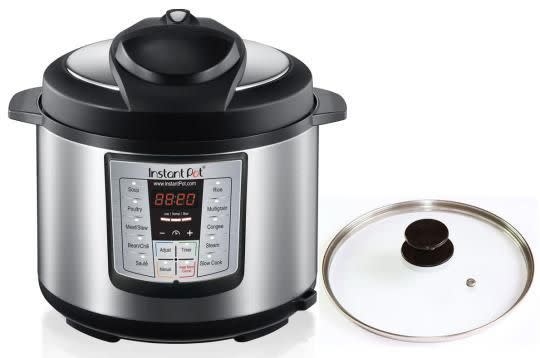
Smart crock pots like this one from Instant Pot promise to cook your meal at the touch of a button. (Photo courtesy of Instant Pot.)
Smart cookers have been a staple in many busy chefs’ kitchens for years. Put in ingredients, press a button, and let it simmer until you’re ready to eat. However, a new, smarter breed of crock pots and pressure cookers have arrived, claiming to make the crock pot process more convenient and hands-off than ever.
The Instant Pot is a buzzy, bluetooth enabled device controlled from your smart phone, allowing the user to send recipes and instructions straight to the machine. This smart crock pot is just the next in a line of technology-connected appliances (think WiFi capable fridges and ovens), the likes of which there are now some 15 billion in circulation — expected to hit 200 billion by 2020, according to Intel.
More: ‘Smart’ Pressure Cookers: Do They Work?
For between $130-235 a pop, the Instant Pot promises to cook anything from oats, to short ribs, to vegetables quickly and simply. Though the instructions can be slightly confusing, the food is surprisingly delicious. “My slow cooker will likely move to a higher shelf, and the Instant pot take its place — because it handles so many types of cooking, with more precision, in a safe electronic casing,” writer Anne Miller wrote while reviewing the device.
As with any innovation there are still technological kinks to be worked out — ineffective Bluetooth and a short connection are two of them. However, as convenience becomes a larger priority in so many households, these smart devices will no doubt take their place in the appliances of many kitchens around the world.
Meat Alternative Companies
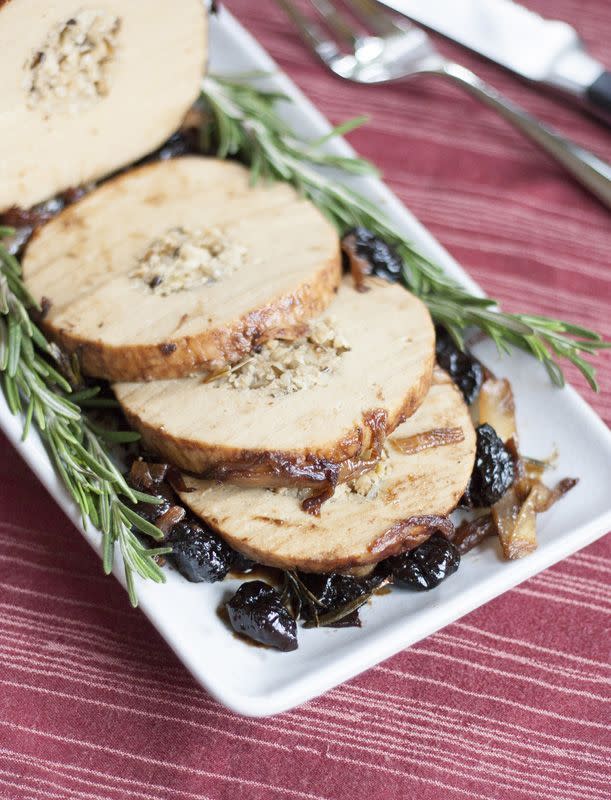
A roast holiday Tofurkey — one of the most widely known meat alternatives in America. (Photo courtesy of Tofurkey.)
Meat-free diets are on the rise, as more people turn to vegetarian and vegan lifestyles as a means to bolster their own health. And, in response to the World Health Organization’s 2015 report that processed meats can cause cancer, the food world is shifting towards more vegetable-heavy dishes and meat alternatives to fill the protein void.
One of the most iconic meat alternative companies is, of course, the people behind Tofurkey — the popular but much joked-about Thanksgiving alternative. This Thanksgiving alone, Tofurkey sold more than 325,000 roasts, bringing the total to 4 million roasts sold since the company began. In 2014, Tofurkey was the number one brand of meat-free deli slices and sausages.
More: Inside the Vegetarian Meat Company Behind Tofurkey
Now, other companies are looking to cash in on this behemoth meat-free market. Gardein makes its faux-birds with a sophisticated, cranberry-stuffed flair, in addition to a variety of other meat substitution products like chicken strips and veggie burgers. The company Field Roast not only has a soy-free holiday roast, but it also also carry everything from breakfast sausages to burgers, all made out of their “Original Vegetarian Grain Meat,” a combination of mushrooms, quinoa, and other high-quality ingredients.
As 2016 is primed to be the year of meat-free, we can only expect the meat alternative business to continue to boom. There’s no doubt that holiday tables across America will look very different in the years to come.
Chef Watson
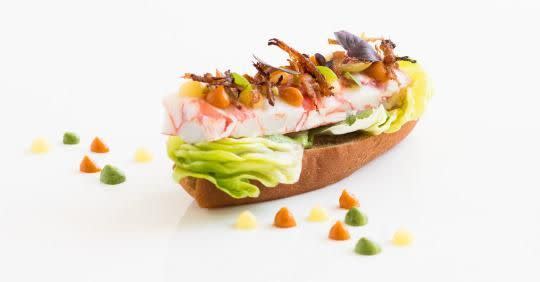
A Portugese lobster roll created by IBM’s machine, Watson. (Photo: SourceBooks)
If you’re trying to pinpoint the next hot chef, look no further than your computer. No, we’re not talking bloggers or YouTube personalities, but the computer itself. In the book “Cognitive Cooking With Chef Watson,” IBM and the Institute of Culinary Education have partnered to think outside the box and create exciting new recipes with unexpected ingredients with the help of one sophisticated chef, Watson. One catch: Watson’s a robot.
Watson, who you might recognize from his winning stunt on Jeopardy, has now taken the culinary world by storm, after IBM loaded the machine with thousands of recipes and food chemical compositions and “taught” Watson the basic ins and outs of what flavors pair well with each other. From there, Watson was unleashed to create his own recipes, drawing on these flavor profiles and recipes.
More: When Computers Cook - IBM’s Chef Knows a Thing or Two About Flavor
The cookbook contains 65 of these Watson-created recipes, which vary from wild to wonderful. Readers will find the likes of an Australian Chocolate Burrito — filled with a chocolate-flavored beef filling and mashed edamame — and Vietnamese Apple Kabobs with pork meatballs, curry chicken, and pineapple broth. Let’s just say these aren’t your grandma’s recipes.
Though Chef Watson probably isn’t going to be considered the next Julia Child any time soon, as these robotic creations continue to evolve, the next big thing could very well be machine-created restaurant menus filled with exotic and surprisingly flavorful combinations no mere mortal could have conceived.
The Rise of the Celebrity E-Commerce Play

Photo: Samantha Bolton for Yahoo Food
This year was truly the year of the foodie, and as food and lifestyle brands became the next hot online commodity, every A, B, and C-list celebrity jumped to craft online food brands that in some cases appeared to come out of nowhere. And while some sites have been more successful than others, there’s no shortage of healthy Hollywood-inspired recipes or carefully crafted table settings to go around.
Following in the footsteps of Martha Stewart, who created a food empire before most of use the Internet, celebs like Reese Witherspoon and Blake Lively have expressed their love for home goods. Witherspoon’s Draper James is a lifestyle site that appeals to the Southern sorority set, while Lively’s fashion and food site, Preserve, has already fallen by the wayside, disappearing from the web altogether. Julianne Hough, Ali Larter, and Molly Sims have also jumped on the lifestyle bandwagon with their sites.
More: Which Celeb Is The Next Martha Stewart?
The two who have come out on top, however, are Gwyneth Paltrow and Jessica Alba, whose ventures have become hits in and of themselves. Paltrow’s Goop, which appeals to healthy moms and has been boosted by the star’s successful cookbooks, has become a major player in the world of lifestyle blogs. On the other hand, Jessica Alba has made major bucks off of her side ventures, including Honestly, a companion blog for her successful e-commerce site, The Honest Company.
As “food world star” continues to be one of the hottest celebrity labels moving into 2016, there’s no saying who is going to attempt to seize the Martha Stewart crown next with their gluten-free, paleo, vegan recipes for overnight oats and other trendy fare.
More tech news you can use from Yahoo Food:
6 Apps, Gadgets, and Services for Tech Foodies to Try
It Looks Cool, But Does 3D-Printed Food Taste Any Good?
How This Brooklyn Chef (Sort of) Embraces Technology

